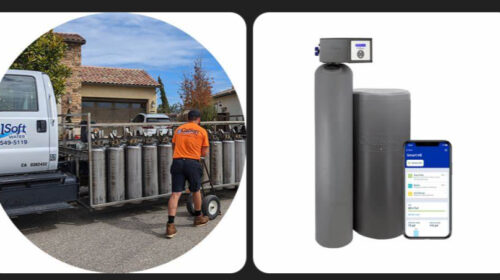One of the most common questions homeowners ask after installing a water softener is: Should I use salt or potassium chloride?
Both are viable options — but they differ in cost, performance, and environmental impact.
🧂 Option 1: Sodium-Based Salt (NaCl)
This is the most commonly used softener salt. It’s inexpensive and widely available at home stores. It effectively removes hardness minerals (like calcium and magnesium) via the ion exchange process.
Pros:
- Most affordable option
- Easy to find in 40–50 lb bags
- Works well for most SoCal homes
Cons:
- Adds sodium to your water (small amount)
- Not ideal for people on low-sodium diets
🌿 Option 2: Potassium Chloride (KCl)
This alternative works similarly to salt but uses potassium instead of sodium — which may appeal to health-conscious users or those with sodium-restricted needs.
Pros:
- Low-sodium alternative
- Environmentally preferred for septic systems
- Better for plants and landscaping (if water is reused)
Cons:
- Typically 3–4x more expensive than salt
- Slightly less efficient at softening (may need more frequent regeneration)
🧠 What We Recommend
At OC Handyman HQ, we recommend starting with standard salt to get your system dialed in. If you’re on a restricted-sodium diet, consider trying potassium chloride once the system is running well.
Remember, regardless of your choice, routine filter changes and monitoring are just as important.


Leave a Reply